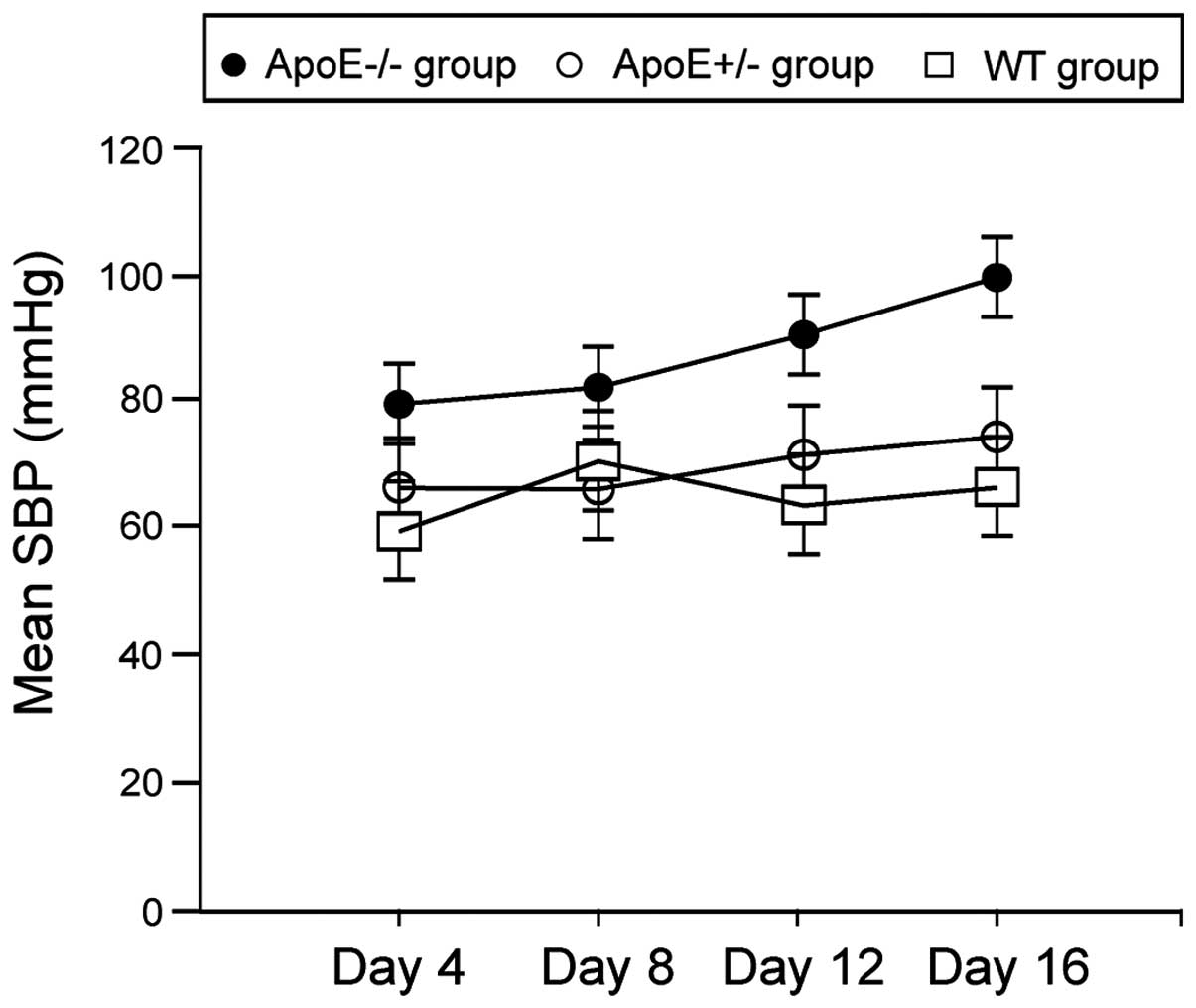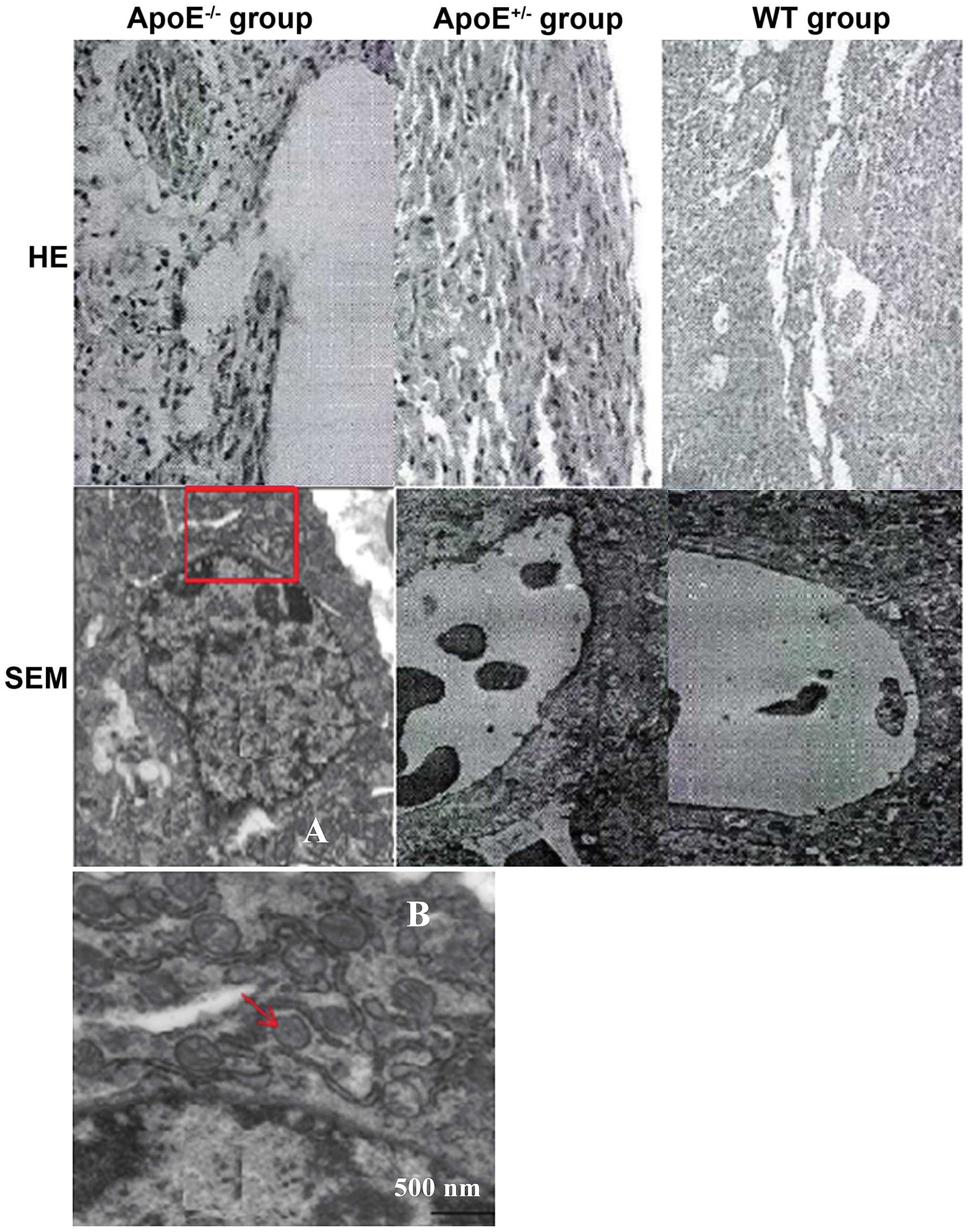Establishment of ApoE-knockout mouse model of preeclampsia and relevant mechanisms
- Authors:
- Published online on: September 6, 2016 https://doi.org/10.3892/etm.2016.3678
- Pages: 2634-2638
-
Copyright: © Sun et al. This is an open access article distributed under the terms of Creative Commons Attribution License.
Metrics: Total
Views: 0 (Spandidos Publications: | PMC Statistics: )
Total PDF Downloads: 0 (Spandidos Publications: | PMC Statistics: )
Abstract
In the present study, we established an ApoE-knockout mouse model of preeclampsia to examine the role of vascular endothelial injury associated with abnormal lipid metabolism in the pathogenesis of preeclampsia. To establish the ApoE-knockout homozygous (ApoE-/-) and heterozygous (ApoE+/-) mouse model, mice were mated with the same genotype and orbital blood on day 19 of conception was collected. The progeny mice were assigned into 3 groups: ApoE-/, ApoE+/- and wild-type (WT) groups. Total cholesterol, triglyceride, low‑density and high‑density lipoprotein were measured in the serum at the end of conception. During conception, the systolic blood pressure of caudal artery was measured every 4 days. Using bicinchoninic acid protein assay, urinary protein and creatinine ratio was measured with a creatinine kit. We observed the pathological changes of glomerular filtration membrane and macroscopic/microscopic morphological changes of placenta by hematoxylin and eosin (H&E) staining and transmission electron microscope. Take fetal mouse through cesarean section on 19th day, measure the birth weight and placental weight of fetal mouse. Using ELISA we measured the expression levels of toll‑like receptor 4 (TLR4) and soluble fms-like tyrosine kinase-1 (sFlt‑1). Our results showed that the differences in serum lipid levels were not statistically significant (P>0.05). The mean systolic blood pressure, urinary protein and creatinine in ApoE-/- group were significantly higher than ApoE+/- group and WT group (P<0.05). Thickening and edema of glomerular filtration membrane, capillary thrombosis, significant edema and necrosis of placental villous stroma were observed in ApoE-/- group. No significant change was detected in the ApoE+/- or WT group. The TLR4 and sFlt-1 expression levels in ApoE-/- group were significantly higher than ApoE+/- and WT group (P<0.05). We concluded that ApoE-knockout mouse could simulate the pathologic process of preeclampsia, while the changes in serum lipids were not noteworthy, thus the pathogenesis of preeclampsia may be mediated by TLF4 and sFlt-1.












